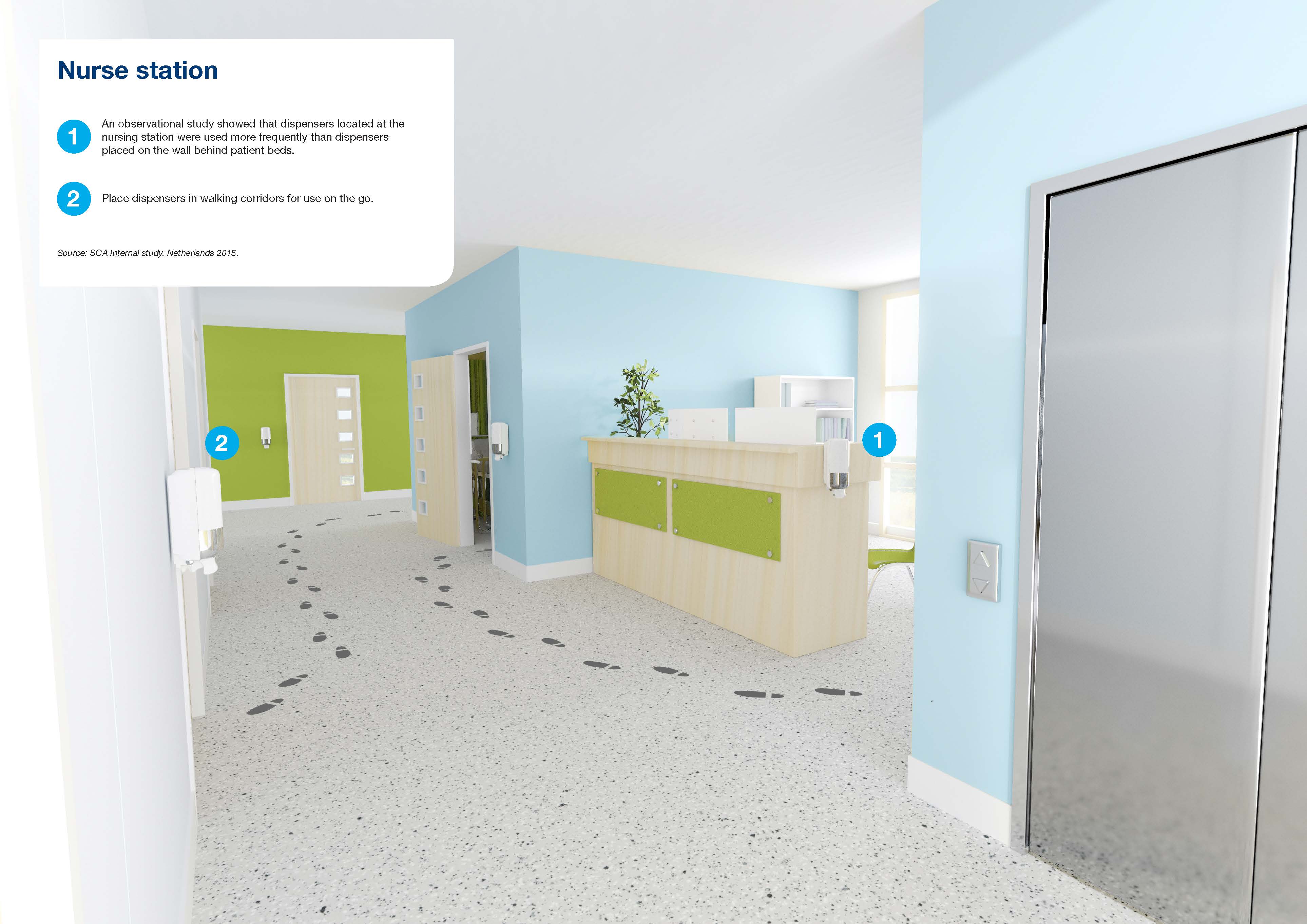by Brianna Crandall — May 18, 2016 — The World Health Organization’s (WHO) “SAVE LIVES: Clean Your Hands” world hand hygiene day on May 5 is aimed at supporting healthcare professionals in achieving and maintaining high hand hygiene compliance in order to minimize cross-contamination and the spread of healthcare-associated infections.
Research shows that hand hygiene dispensers have an impact on compliance rates, so in support of the world hand hygiene day, global hygiene and forest products company SCA and its hygiene brand Tork created visual inspiration for supporting hospitals in dispenser placement decisions.

SCA’s Tork advises that dispensers be placed near the entrance to nurses’ stations and in walking corridors for use on the go.
What matters most is not putting up more dispensers, but making sure they are correctly placed, says Tork. In fact, studies show that optimizing dispenser placement can increase usage by more than 50%, and that simply increasing the number of dispensers has a smaller impact on usage than keeping the same number of dispensers but making them more prominently visible.
“Nurses can walk miles during a single shift; they shouldn’t have to go out of their way to get to the hand hygiene dispenser,” noted Tom Bergin, marketing director for the AfH Professional Hygiene business at SCA North America.
Inspirational visuals
Every hospital is unique; to truly optimize dispenser placement a work-flow study is needed. However, Tork’s guides can help with some general principles. The information in the placement guide is based on both SCA-sponsored research and independent findings from academic research.
The guide is built around visualizations of four common types of areas commonly found in hospitals. The visualizations suggest possible dispenser placements that support hand hygiene compliance with the important WHO My 5 Moments for Hand Hygiene in mind. Tork’s suggestions are outlined below.
Hospital entrance
Few visitors perform hand hygiene when entering the hospital. Solutions in the entrance could be important for supporting and educating visitors.
- Position the hand hygiene dispenser in a clearly visible location near the entrance.
- Provide clear and simple information about hand hygiene directed at visitors.
Semi-private patient room
This type of room requires more than one dispenser to provide enough convenience in use.
- Consistent and familiar locations in every room eliminate the need to look for dispensers – in one study, dispensers located near sinks and at the entrance of the room were used more frequently.
- Consider placing dispensers near each patient so that caregiver focus on the patient can be maintained during the entire interaction.
Private patient room
Hand hygiene dispensers that are clearly visible and located where care is frequently performed will be used more.
- Install dispensers on “walking routes;” avoid placing dispensers out of the way, behind objects or out of sight.
- Dispensers should be immediately visible when entering the room.
Nurses’ station
Nurses need to perform very frequent hand hygiene. Therefore, the nurse station should offer excellent hand hygiene possibilities.
- Many patient care episodes begin or end at the nursing station; dispensers placed near the station entrance are usually conveniently placed on a walking route.
- In an SCA-sponsored study, dispensers placed by the nurse station were used more frequently than dispensers placed on the wall behind patient beds.
Healthcare workers are busy people. Getting the job done under pressure requires ready access to hygiene essentials: doctors and nurses say they want dispensers to be visible when they enter a room, and they do not want to go out of their way to get to them, notes Tork.





